Balkinization
an unanticipated consequence of
Jack M. Balkin
Balkinization Symposiums: A Continuing List
E-mail:
Jack Balkin:
jackbalkin at yahoo.com
Bruce Ackerman
bruce.ackerman at yale.edu
Ian Ayres
ian.ayres at yale.edu
Corey Brettschneider
corey_brettschneider at brown.edu
Mary Dudziak
mary.l.dudziak at emory.edu
Joey Fishkin
joey.fishkin at gmail.com
Heather Gerken heather.gerken at yale.edu
Abbe Gluck abbe.gluck at yale.edu
Mark Graber
mgraber at law.umaryland.edu
Stephen Griffin
sgriffin at tulane.edu
Jonathan Hafetz
jonathan.hafetz at shu.edu
Jeremy Kessler
jkessler at law.columbia.edu
Andrew Koppelman
akoppelman at law.northwestern.edu
Marty Lederman
msl46 at law.georgetown.edu
Sanford Levinson
slevinson at law.utexas.edu
David Luban
david.luban at gmail.com
Gerard Magliocca
gmaglioc at iupui.edu
Jason Mazzone
mazzonej at illinois.edu
Linda McClain
lmcclain at bu.edu
John Mikhail
mikhail at law.georgetown.edu
Frank Pasquale
pasquale.frank at gmail.com
Nate Persily
npersily at gmail.com
Michael Stokes Paulsen
michaelstokespaulsen at gmail.com
Deborah Pearlstein
dpearlst at yu.edu
Rick Pildes
rick.pildes at nyu.edu
David Pozen
dpozen at law.columbia.edu
Richard Primus
raprimus at umich.edu
K. Sabeel Rahmansabeel.rahman at brooklaw.edu
Alice Ristroph
alice.ristroph at shu.edu
Neil Siegel
siegel at law.duke.edu
David Super
david.super at law.georgetown.edu
Brian Tamanaha
btamanaha at wulaw.wustl.edu
Nelson Tebbe
nelson.tebbe at brooklaw.edu
Mark Tushnet
mtushnet at law.harvard.edu
Adam Winkler
winkler at ucla.edu
Compendium of posts on Hobby Lobby and related cases
The Anti-Torture Memos: Balkinization Posts on Torture, Interrogation, Detention, War Powers, and OLC
The Anti-Torture Memos (arranged by topic)
Recent Posts
The Radical Fund – An Historian’s Brief For Social Democracy
Just A Few Blogs
ACS Blog
Alas, a Blog
Althouse
Arts and Letters Daily
Atrios (Eschaton)
Bill of Health
Buzzflash.com
Buzz Machine
Cato at Liberty
Juan Cole (Informed Comment)
Concurring Opinions
The Constitution in 2020
Corrente
Crooked Timber
Daily Howler
Daily Kos
Dana Boyd
Brad DeLong
Digby (Hullabaloo)
Discriminations
Daniel Drezner
Kevin Drum (Mother Jones)
Electrolite
En Banc
Eunomia (Daniel Larison)
Fafblog
Michael Froomkin (Discourse.net)
GovLab (Beth Noveck)
Rick Hasen (Election Law)
History News Network
How Appealing
Ignatz (Sam Heldman)
The Importance of (Ernie Miller)
Infolaw
Instapundit
International Economic Law and Policy Blog
IntLawGrrls
Jacob Levy
Jesus' General
Jurisdynamics
The Kitchen Cabinet
Mark Kleiman
Law Blog Central
Larry Lessig
Lawyers, Guns and Money
Liberal Oasis
Brian Leiter's Law School Reports
The Leiter Reports
Marginal Revolution
Megan McArdle
Memeorandum
Metafilter
Mirror of Justice
The New Republic
Newseum
No More Mister Nice Blog
Brendan Nyhan
Opinio Juris
Orcinus
The Originalism Blog
Pandagon
Passport (Foreign Policy)
Overcoming Bias
Political Animal (Washington Monthly)
Political Theory Daily Review
Political Wire (Taegan Goddard)
The Poor Man
Virginia Postrel
Prawfsblawg
Public Reason
Jonathan Rauch
Raw Story
Redstate
ReligiousLeftLaw.com
Reporters Committee For Freedom of the Press
Reproductive Rights Blog
Rothman's Roadmap to the Right of Publicity
SCOTUS Blog
Seeing the Forest
Clay Shirky
The Shifted Librarian
The Situationist
Larry Solum (Legal Theory)
Andrew Sullivan
Talking Points Memo
Talk Left
Tapped
Tbogg
TechPresident
The Paper Chase (Jurist)
Tom Paine
Tom Tomorrow (This Modern World)
Eve Tushnet
Uggabugga
University of Chicago Law School Faculty Blog
Unqualified Offerings
The Volokh Conspiracy
War and Piece (Laura Rozen)
Wampum
Oliver Willis
Wonkette
Written Description
Matthew Yglesias
Yin
Your Choice of Feeds
1. XML
powered by
2. Atom Feed
3. RSS 2.0
The Radical Fund – An Historian’s Brief For Social Democracy
Guest Blogger
For the Balkinization symposium on John Witt, The Radical Fund: How a Band of Visionaries and a Million Dollars Upended America (Simon and Schuster, 2025). Willy Forbath John Witt’s The Radical Fund is a feast. Brimming with narrative energy, the book is
a brilliantly detailed chronicle of the life and times of the Garland Fund’s
directors and counselors along with the individuals and organizations whose
work it sustained. Dozens of famous and
forgotten figures of the broad left of the early 20th century –
activists and organizers, journalists, attorneys, economists and other policy
mavens; liberals and progressives, socialists and social democrats,
syndicalists, anarchists and communists – inhabit the book’s 600-plus pages, as
directors and beneficiaries of the Fund alongside the organizations many of
them founded and led, including three that turned out to be pillars of modern
American liberalism in the decades ahead: the ACLU, the CIO (and the industrial
unions it came to house), and the NAACP.
Witt is equally masterful crafting shrewd and revealing biographical
sketches, recounting dramatic strikes and protests, and conveying the stakes of
intricate organizational conflicts and the genealogy of complex ideas – all in
pithy and often sparkling prose. Still, one could fill a small library with books about these
people and organizations. What is to be
gained from a new one that attends to the outfit that funded them? A great deal is the answer. First and foremost,
virtually all the books in that library recount the origins and early years of individual
movements – free speech and civil liberties, racial justice, and labor and
their respective organizational homes.
But the Fund’s history in Witt’s hands is that of a unique “workshop”
where the leaders, strategists, and thinkers of all three of these
movements “convened” and “networked.”
To study their mutual engagements and to put their battles and
achievements alongside one another, as he has done, is “to see the interconnectedness
of the core projects of modern American liberalism.” Witt shows us how the outlook and direction of each of these
movements were altered over time by their engagements with one another. The book, in other words, is not only a wide-angle
tale; it is a revelatory dialectical account of the making of mid-twentieth-century
liberalism. Witt’s dialectical insights
emerge almost seamlessly from the historical narrative. Most striking is the book’s reconstruction of how the early
NAACP’s Black leaders, as directors and grantees of the Fund, were pushed and
prodded by the era’s white labor radicals (again, including key figures in the
Fund’s world, its founder and chief executive, Roger Baldwin among them) to reframe
and reimagine many of their efforts in terms of the class struggle and economic
democracy -- and how these relationships also pushed the white labor-and-class-struggle-minded
radicals to abandon some of their ideological priors about the primacy of class
struggle over racial justice, as they were pushed to see how much their
socialist and syndicalist orthodoxies failed to fathom about the South’s system
of racial subordination and the dynamics of the struggle against Jim Crow. Among the fruits of this approach are Witt’s superb
portraits of the great Black labor leader and civil rights champion, A. Phillip
Randolph and of Charles Hamilton Houston, the brilliant Black dean of Howard
Law School and special counsel and key strategist of the NAACP in the 1930s. Both serve Witt as embodiments of an outlook
that blended hitherto separate visions of race emancipation and class
liberation. That is not all. Witt
also offers an original exploration of the paradoxical nature of left-wing philanthropy. The United States may be unique for the
outsized role that private foundations have played in funding public goods and
thereby shaping a nation’s governance.
The Garland Fund was formed soon after the giant Rockefeller and
Carnegie foundations began play their familiar parts in directing and
underwriting the course of ameliorative social reform with the aim of softening
the ravages of the harshly exploitive new corporate capitalist order from
whence came the fortunes they spent. The
Garland Fund set out instead to upend that order, using its tiny portion of the
unwarranted gains of capital accumulation. The big foundations hoped to quell insurgency
from below; the Garland Fund hoped to underwrite it. Witt shows us how the Fund’s own corporate
and tax attorneys constructed and defended its endeavors, in a novel study of
the possibilities and limits of Audre Lourde’s famous aphorism about using the
master’s tools to dismantle the master’s house. With its tiny
portion, the Fund accomplished much. Its
most enduring accomplishment, however, was not the landmark decisions like
Brown v. Board nor the industrial unions its grants helped build or any other
institution, but instead a deeper and more fundamental discovery about the
character of radical reform. An “amalgam
of radicalism and practicality,” Witt suggests, is the hidden legacy of “the
world of the Fund.” This “amalgam” threads
through the book as Witt “teases out” what he finds to be the recurrent grammar
or deep structure of radical reform. None of the individual actors or organizations
on the non-communist, non-syndicalist, liberal left began the journey with this
set of premises. None could have discovered them on their own; they had to
learn and invent together. The Garland Fund Board of Directors’ meeting place in
Greenwich Village was the room where it happened. The
Fund’s fractious Board meetings brought together – “convened,” as Witt is fond
of saying, the heroines and heroes and the irksome villains of Witt’s
saga. The heroes and heroines are the anti-communist
socialists, social democrats, and left-leaning progressives and New Dealers: A.
Philip Randolph, Charles Hamilton Houston, of course, but also A. J. Muste,
Robert Wagner, Frances Perkins, Sidney Hillman, Walter Reuther, and others, who
fought to organize the unorganized and dismantle unbridled capitalism and white
supremacy but also joined battle with the Fund’s roster of scheming Bolsheviks
and “self-immolating” syndicalists like
Elizabeth Gurley Flynn and, much of the time, Roger Baldwin himself, aligned
with the IWW (International Workers of the World or “Wobblies”), who dreamed of
total revolution and opposed funding grants for the very projects and
organizations that embodied the “social democratic vision” and pragmatic radical-reform
outlook Witt prizes. What motivated this outlook, he argues, was a shared search
for a wiser alternative to total, revolutionary rupture as the way to topple
capitalist domination and Jim Crow. And
the search succeeded. What, then, is the hidden grammar that Witt “teases out” of
all these happenings? “Democracy” and
“technocracy” are his keywords; they stand for the hot and cold elements of
radical but durable social change: a pair of opposing touchstones, in deep
tension with one another, yet equally indispensable to the endeavor. The hot, democratic element is the
generation of “passionate” movement energy and solidarity via “social
mobilization.” This provides the “fuel”
for radical democratic reform. The cold
element is the technocratic work of legal architecture and institutional design
essential to secure democratic gains and ensure that poor and working people
continue over time to enjoy a real measure of both political clout and material
security, and a real share of voice and authority in the governance of social
and economic life. “Social mobilization”
without institutional and legal frameworks is destined to fade away; legal and
institutional frameworks without ongoing movement energy are hollow and bureaucratic. Witt’s grammar of radical reform has something in common
with the notion of “non-reformist reforms,” which left legal scholars like Amna
Akbar have recently revived from the work of 1970s “post-Marxist” theorists
like Andre Gorz; and much in common with the pragmatist- and legal-realist and
institutionalist-inspired work of scholars
in the Law and Political Economy movement like Amy Kapczynski, Sabeel
Rahman, Jed Purdy, and David Grewal, along with the work of “new labor law”
scholars like Kate Andrias and Ben Sachs. Like Witt, the LPE and “new labor law” schools
find inspiration in early twentieth-century social democracy’s radical
gradualism and its quest for new institutional frameworks capable of empowering
poor and working people and of linking struggles for class, racial, and sexual
emancipation. Witt’s history, then,
is a signal contribution to the genre of social democratic revivalism that the
late, great twentieth-century European historian Tony Judt launched with books
like Ill Fares the Land. Any review worth its
salt has to offer some critique. This
one’s lies partly in a dose of caution about Witt’s treatment of the hard left. Witt may slight the truth in their
criticisms, even though he’s right about the folly of their alternatives. More important, he seems to slight another hostile
force that bore down on the Fund’s great synthetic achievements from without,
and not from within – not the Wobblies and communists, but the dawn of the Cold
War and the second Red Scare, which got underway during the later years of Witt’s
chronicle. These developments go largely
unexamined, along with the purges they produced - of all manner of leftist
activists and thinkers, energies and ideas from the NAACP, the ACLU, and the
CIO, alike. Yet, this historical turn in
the road hobbled, where it did not obliterate, the left/liberal alliances and
collaborations that Witt treats as durable, but other historians have found more
fragile and fleeting. The Radical Fund promises to “recover the
astonishing world of the [Garland] Fund” and “the lessons its history holds.” That, far and away, is its main goal and
great achievement. But Witt also aims to
address and correct the Fund’s “[d]etractors on the left.” The
detractors are prominent left-leaning legal historians who have not been
“generous” to the Fund and its great organizational offspring. Perhaps, they seem to Witt a tiny bit like
contemporary avatars of the hard left of a century ago. In any case, they have sparked a bit of muted
wrath. These historians, Witt explains, “assert
that the Fund’s best-known campaigns settled for a limited set of legal rights
where the real issue was brute power.”
The joint NAACP-Garland Fund campaign against Jim Crow, he tells us, stands
falsely charged for “substitut[ing] court-room triumphs for transformative
change.” This is Witt’s view of Risa
Goluboff’s celebrated The Lost Promise of Civil Rights, among other leading
accounts. The ACLU, in Witt’s
view, has been charged with the same bum rap.
In this case, it is Laura Weinrib’s The Taming of Free Speech that tells the ACLU’s history as a tale, in
Witt’s words, of “pursuing abstract ideas about the freedom to speak in a world
where some people had the resources to make themselves heard and others did
not.” Similar critiques, he observes,
“attack Sidney Hillman’s CIO for erecting labor union institutions said to have
sapped the energies of working-class mobilization.” What all these historians miss,
says Witt, is the “amalgam” approach to the history at hand. Don’t look at the NAACP, ACLU, or the
administrative-state-building endeavors of Robert Wagner and his legal team
crafting the NLRA (Wagner Act) in isolation.
Widen your lens to see how these lawyerly “technocratic” actors
collaborated with the insurgent, grassroots, leftist-led social movements of
the “Fund’s world.” Together, they
produced revolutionary changes in American life. Thus, it was “the electricity of
the sit-down strikes alongside the bureaucratic structure of the Wagner Act”
that ushered in a social transformation in the material well-being of millions
of working-class families – the creation of a blue-collar middle class; and the
economic resources and political clout of their powerful unions, in turn, underwrote
decades-long campaigns for voting rights in the South and the enactment of the
great civil rights statutes of the 1960s.
Similarly, Witt suggests, if you
widen your lens, you see how much Goluboff’s civil rights history misses. You glimpse how the NAACP’s great Charles
Hamilton Houston understood full well that “[i]t was the Communist Party…not
the NAACP, and certainly not the NAACP’s legal campaign, that had energized
‘the masses’ of Black people ‘with a sense of their raw, potential
power.’..‘What sort of justice [, Witt quotes Houston declaring,] did the
[Scottsboro] boys obtain in Alabama’…before the ILD [the communist
International Labor Defense outfit] ‘entered the case?’” And so, Houston put up with the Communists’ slander
and scorn, and welcomed their contributions to the struggle, in virtue of the
dedication of their militant, grass-roots organizers in Southern Black
communities, industrial workplaces, and cotton fields. It’s
this antagonistic cooperation, Witt concludes, this amalgam of social
mobilization and careful lawyering, that Golbuff overlooks. There is much to all this. But still, Goluboff does not miss the NAACP’s
radical alliances that Witt recounts.
They are part and parcel of the labor-focused era in the civil rights
struggle, whose “lost promise” Goluboff laments. She may
overstate how far the NAACP abandoned economic matters when its focus came to
rest on desegregation. She may miss the
continuities that link the labor work of the 1930s with the employment
discrimination work of the post-war NAACP.
But by the same token, Witt glosses over how swiftly Charles Houston’s
testy left/liberal collaborations evaporated, as the Red Scare got underway,
and drove the NAACP to expel communists and steer clear of radical
alliances. There is no mistaking the shift Goluboff
chronicles on the road to Brown v. Board in the chilly climate of Cold
War liberalism. Likewise with Weinrib’s Taming
of Free Speech. Weinrib is not
making the kind of counterfactual argument Witt ascribes to the Fund’s
“detractors.” Goluboff certainly
suggests that there was a more transformative, radical path needlessly
abandoned by the NAACP. Not so with
Weinrib’s take on the ACLU. She
chronicles how the ACLU abandoned its early partisanship for the working class
and labor’s “freedom to agitate” in favor of a “neutral principles” approach to
free speech and civil liberties, which led the organization to litigate on
behalf of all comers - for employers along with workers, right-wingers as well
as leftists. To show this, and to call
it a “taming of free speech,” is not the same as contending that the ACLU made
a moral and political blunder, or that the road not taken was a more promising
one. It remains true, however,
that the path the ACLU chose was one fairly described, in the critical legal
history lingo Witt abjures, as legal liberalism. Right now, legal liberalism does not look so
bad. Or not so bad in the arena
of civil liberties and restraints on unbridled state actors. Labor law is another matter. Legal liberalism and liberal legalism have
not been good for labor law, from labor’s perspective. Witt offers a paean for the joinder of
sit-down strikes and the creation of Wagner’s National Labor Relations
Act. But even in the immediate wake of
the Switch in Time and the Court’s upholding of the Act, the Court set about
its own taming of the Act, squarely outlawing and cutting off the “electricity
of the sit-down strike” and other key weapons in labor’s arsenal – even before
Congress got into the act with Taft-Hartley.
Like Banquo’s ghost, the old, repressive judge-made common law of
labor-capital relations would not die. And even in the salad days of the Warren Court,
even the great liberals like Justice Brennan, SCOTUS carried on with doctrines
that buried the right to strike in a legal black hole, and fulfilled many of
the dire prophecies that the hard left offered up against Witt’s social
democratic heroes and their efforts to enlist the state on labor’s side. The hidden logic of Witt’s
historical amalgam may not be quite as tidy as Witt suggests. Like the
sit-downers, labor once more may have to resort to precarious illegalities
along the uncertain way to rekindling a better future. And so too, with the new
kinds of unions – of debtors, tenants, and others, whose legal scaffoldings
left legal scholars have begun to imagine, and whose work Witt commends. Witt has produced a grand brief for reviving
the social democratic vision. And in the
work ahead, his book is not only an intellectual tour de force but a welcome
inspiration and a precious gift. Willy Forbath holds the
Lloyd M. Bentsen Chair in Law at UT Austin School of Law. You can reach him at wforbath@law.utexas.edu.
Posted
9:30 AM
by Guest Blogger [link]
Books by Balkinization Bloggers

Linda C. McClain and Aziza Ahmed, The Routledge Companion to Gender and COVID-19 (Routledge, 2024)

David Pozen, The Constitution of the War on Drugs (Oxford University Press, 2024)

Jack M. Balkin, Memory and Authority: The Uses of History in Constitutional Interpretation (Yale University Press, 2024)
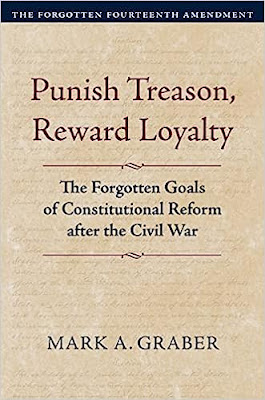
Mark A. Graber, Punish Treason, Reward Loyalty: The Forgotten Goals of Constitutional Reform after the Civil War (University of Kansas Press, 2023)
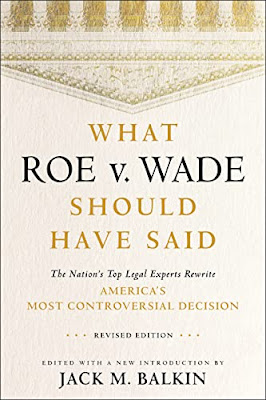
Jack M. Balkin, What Roe v. Wade Should Have Said: The Nation's Top Legal Experts Rewrite America's Most Controversial Decision - Revised Edition (NYU Press, 2023)

Andrew Koppelman, Burning Down the House: How Libertarian Philosophy Was Corrupted by Delusion and Greed (St. Martin’s Press, 2022)

Gerard N. Magliocca, Washington's Heir: The Life of Justice Bushrod Washington (Oxford University Press, 2022)
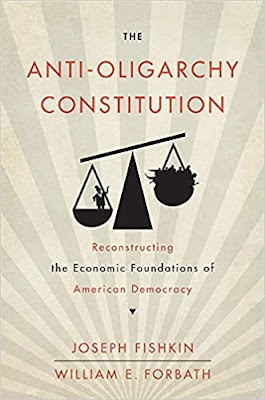
Joseph Fishkin and William E. Forbath, The Anti-Oligarchy Constitution: Reconstructing the Economic Foundations of American Democracy (Harvard University Press, 2022)
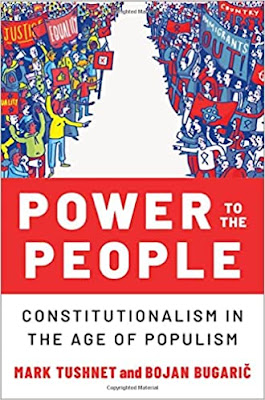
Mark Tushnet and Bojan Bugaric, Power to the People: Constitutionalism in the Age of Populism (Oxford University Press 2021).

Mark Philip Bradley and Mary L. Dudziak, eds., Making the Forever War: Marilyn B. Young on the Culture and Politics of American Militarism Culture and Politics in the Cold War and Beyond (University of Massachusetts Press, 2021).

Jack M. Balkin, What Obergefell v. Hodges Should Have Said: The Nation's Top Legal Experts Rewrite America's Same-Sex Marriage Decision (Yale University Press, 2020)

Frank Pasquale, New Laws of Robotics: Defending Human Expertise in the Age of AI (Belknap Press, 2020)

Jack M. Balkin, The Cycles of Constitutional Time (Oxford University Press, 2020)

Mark Tushnet, Taking Back the Constitution: Activist Judges and the Next Age of American Law (Yale University Press 2020).

Andrew Koppelman, Gay Rights vs. Religious Liberty?: The Unnecessary Conflict (Oxford University Press, 2020)

Ezekiel J Emanuel and Abbe R. Gluck, The Trillion Dollar Revolution: How the Affordable Care Act Transformed Politics, Law, and Health Care in America (PublicAffairs, 2020)

Linda C. McClain, Who's the Bigot?: Learning from Conflicts over Marriage and Civil Rights Law (Oxford University Press, 2020)
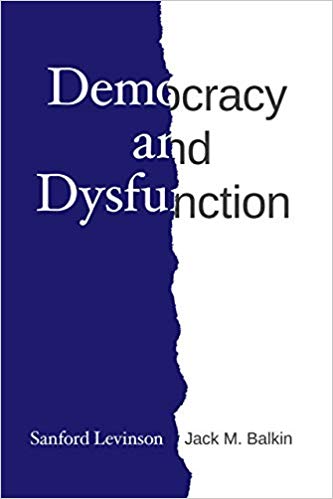
Sanford Levinson and Jack M. Balkin, Democracy and Dysfunction (University of Chicago Press, 2019)

Sanford Levinson, Written in Stone: Public Monuments in Changing Societies (Duke University Press 2018)

Mark A. Graber, Sanford Levinson, and Mark Tushnet, eds., Constitutional Democracy in Crisis? (Oxford University Press 2018)

Gerard Magliocca, The Heart of the Constitution: How the Bill of Rights became the Bill of Rights (Oxford University Press, 2018)

Cynthia Levinson and Sanford Levinson, Fault Lines in the Constitution: The Framers, Their Fights, and the Flaws that Affect Us Today (Peachtree Publishers, 2017)

Brian Z. Tamanaha, A Realistic Theory of Law (Cambridge University Press 2017)

Sanford Levinson, Nullification and Secession in Modern Constitutional Thought (University Press of Kansas 2016)

Sanford Levinson, An Argument Open to All: Reading The Federalist in the 21st Century (Yale University Press 2015)

Stephen M. Griffin, Broken Trust: Dysfunctional Government and Constitutional Reform (University Press of Kansas, 2015)

Frank Pasquale, The Black Box Society: The Secret Algorithms That Control Money and Information (Harvard University Press, 2015)

Bruce Ackerman, We the People, Volume 3: The Civil Rights Revolution (Harvard University Press, 2014)
Balkinization Symposium on We the People, Volume 3: The Civil Rights Revolution

Joseph Fishkin, Bottlenecks: A New Theory of Equal Opportunity (Oxford University Press, 2014)

Mark A. Graber, A New Introduction to American Constitutionalism (Oxford University Press, 2013)

John Mikhail, Elements of Moral Cognition: Rawls' Linguistic Analogy and the Cognitive Science of Moral and Legal Judgment (Cambridge University Press, 2013)

Gerard N. Magliocca, American Founding Son: John Bingham and the Invention of the Fourteenth Amendment (New York University Press, 2013)

Stephen M. Griffin, Long Wars and the Constitution (Harvard University Press, 2013)

Andrew Koppelman, The Tough Luck Constitution and the Assault on Health Care Reform (Oxford University Press, 2013)

James E. Fleming and Linda C. McClain, Ordered Liberty: Rights, Responsibilities, and Virtues (Harvard University Press, 2013)
Balkinization Symposium on Ordered Liberty: Rights, Responsibilities, and Virtues

Andrew Koppelman, Defending American Religious Neutrality (Harvard University Press, 2013)

Brian Z. Tamanaha, Failing Law Schools (University of Chicago Press, 2012)

Sanford Levinson, Framed: America's 51 Constitutions and the Crisis of Governance (Oxford University Press, 2012)

Linda C. McClain and Joanna L. Grossman, Gender Equality: Dimensions of Women's Equal Citizenship (Cambridge University Press, 2012)

Mary Dudziak, War Time: An Idea, Its History, Its Consequences (Oxford University Press, 2012)

Jack M. Balkin, Living Originalism (Harvard University Press, 2011)

Jason Mazzone, Copyfraud and Other Abuses of Intellectual Property Law (Stanford University Press, 2011)

Richard W. Garnett and Andrew Koppelman, First Amendment Stories, (Foundation Press 2011)

Jack M. Balkin, Constitutional Redemption: Political Faith in an Unjust World (Harvard University Press, 2011)

Gerard Magliocca, The Tragedy of William Jennings Bryan: Constitutional Law and the Politics of Backlash (Yale University Press, 2011)

Bernard Harcourt, The Illusion of Free Markets: Punishment and the Myth of Natural Order (Harvard University Press, 2010)

Bruce Ackerman, The Decline and Fall of the American Republic (Harvard University Press, 2010)
Balkinization Symposium on The Decline and Fall of the American Republic

Ian Ayres. Carrots and Sticks: Unlock the Power of Incentives to Get Things Done (Bantam Books, 2010)

Mark Tushnet, Why the Constitution Matters (Yale University Press 2010)
Ian Ayres and Barry Nalebuff: Lifecycle Investing: A New, Safe, and Audacious Way to Improve the Performance of Your Retirement Portfolio (Basic Books, 2010)
.jpg)
Jack M. Balkin, The Laws of Change: I Ching and the Philosophy of Life (2d Edition, Sybil Creek Press 2009)

Brian Z. Tamanaha, Beyond the Formalist-Realist Divide: The Role of Politics in Judging (Princeton University Press 2009)
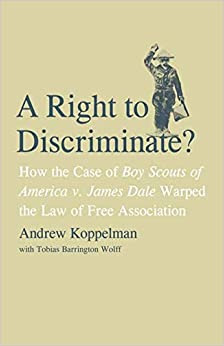
Andrew Koppelman and Tobias Barrington Wolff, A Right to Discriminate?: How the Case of Boy Scouts of America v. James Dale Warped the Law of Free Association (Yale University Press 2009)

Jack M. Balkin and Reva B. Siegel, The Constitution in 2020 (Oxford University Press 2009)
Heather K. Gerken, The Democracy Index: Why Our Election System Is Failing and How to Fix It (Princeton University Press 2009)

Mary Dudziak, Exporting American Dreams: Thurgood Marshall's African Journey (Oxford University Press 2008)

David Luban, Legal Ethics and Human Dignity (Cambridge Univ. Press 2007)

Ian Ayres, Super Crunchers: Why Thinking-By-Numbers is the New Way to be Smart (Bantam 2007)

Jack M. Balkin, James Grimmelmann, Eddan Katz, Nimrod Kozlovski, Shlomit Wagman and Tal Zarsky, eds., Cybercrime: Digital Cops in a Networked Environment (N.Y.U. Press 2007)
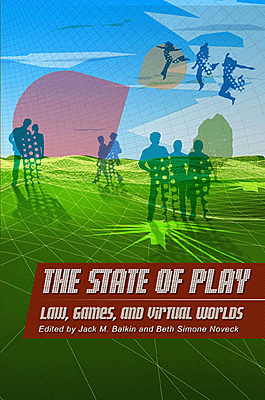
Jack M. Balkin and Beth Simone Noveck, The State of Play: Law, Games, and Virtual Worlds (N.Y.U. Press 2006)

Andrew Koppelman, Same Sex, Different States: When Same-Sex Marriages Cross State Lines (Yale University Press 2006)
Brian Tamanaha, Law as a Means to an End (Cambridge University Press 2006)
Sanford Levinson, Our Undemocratic Constitution (Oxford University Press 2006)
Mark Graber, Dred Scott and the Problem of Constitutional Evil (Cambridge University Press 2006)
Jack M. Balkin, ed., What Roe v. Wade Should Have Said (N.Y.U. Press 2005)
Sanford Levinson, ed., Torture: A Collection (Oxford University Press 2004)
Balkin.com homepage
Bibliography
Conlaw.net
Cultural Software
Writings
Opeds
The Information Society Project
BrownvBoard.com
Useful Links
Syllabi and Exams